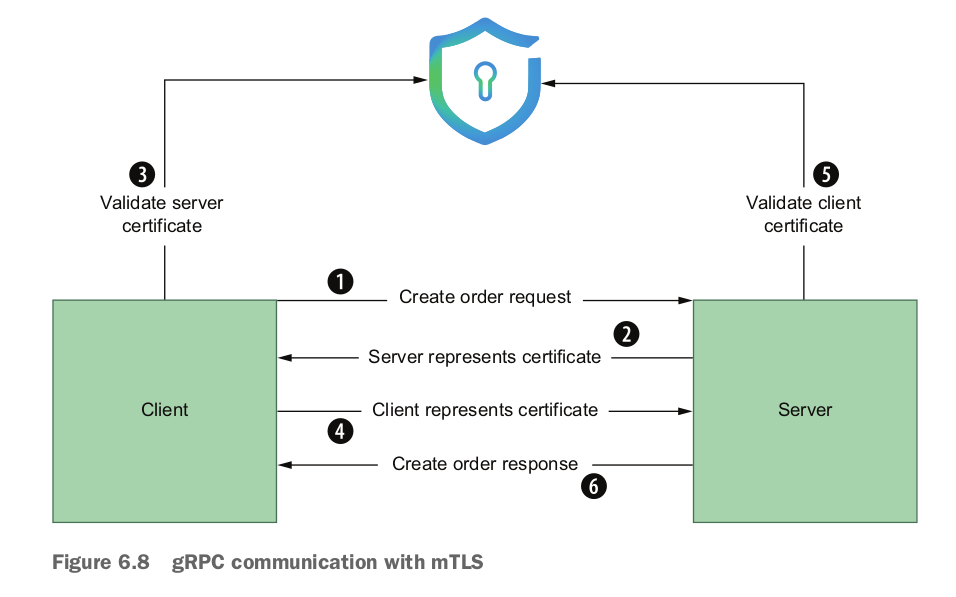Adding certificate information to a server implementation is twofold: implement logic to load credentials and create a TransportCredentials(http://mng.bz/gBAe) instance; then use this function within the interceptor to handle credentials verification out of the box for each request.
This means the following steps are applied (figure 6.8):
1 The client sends a gRPC call to the server.
2 The server represents its shared certificate with its public key.
3 The client validates this certificate on a CA. For now, the CA cert contains client and server shared certificates.
4 After client validation, the client presents its shared certificate with its public key to the server.
5 The server validates the shared certificate on the CA.
6 After successful verification, the client receives a response from the gRPC call.
If we wanted to implement this flow on the client and server side, we could use already generated shared certificates for both the server and client side. Since the CA signs the certificate, those shared certificates ( client.crt, server.crt) are already in ca.crt. For development purposes, we will generate a cert pool in the server and client and append client and server certificates there. Finally, we will put TLS configuration inside gRPC server options.
This implementation is useful for local development, but in a production environment, it is best practice to delegate certificate management to a third party.




【推荐】国内首个AI IDE,深度理解中文开发场景,立即下载体验Trae
【推荐】编程新体验,更懂你的AI,立即体验豆包MarsCode编程助手
【推荐】抖音旗下AI助手豆包,你的智能百科全书,全免费不限次数
【推荐】轻量又高性能的 SSH 工具 IShell:AI 加持,快人一步
· 震惊!C++程序真的从main开始吗?99%的程序员都答错了
· 【硬核科普】Trae如何「偷看」你的代码?零基础破解AI编程运行原理
· 单元测试从入门到精通
· 上周热点回顾(3.3-3.9)
· winform 绘制太阳,地球,月球 运作规律